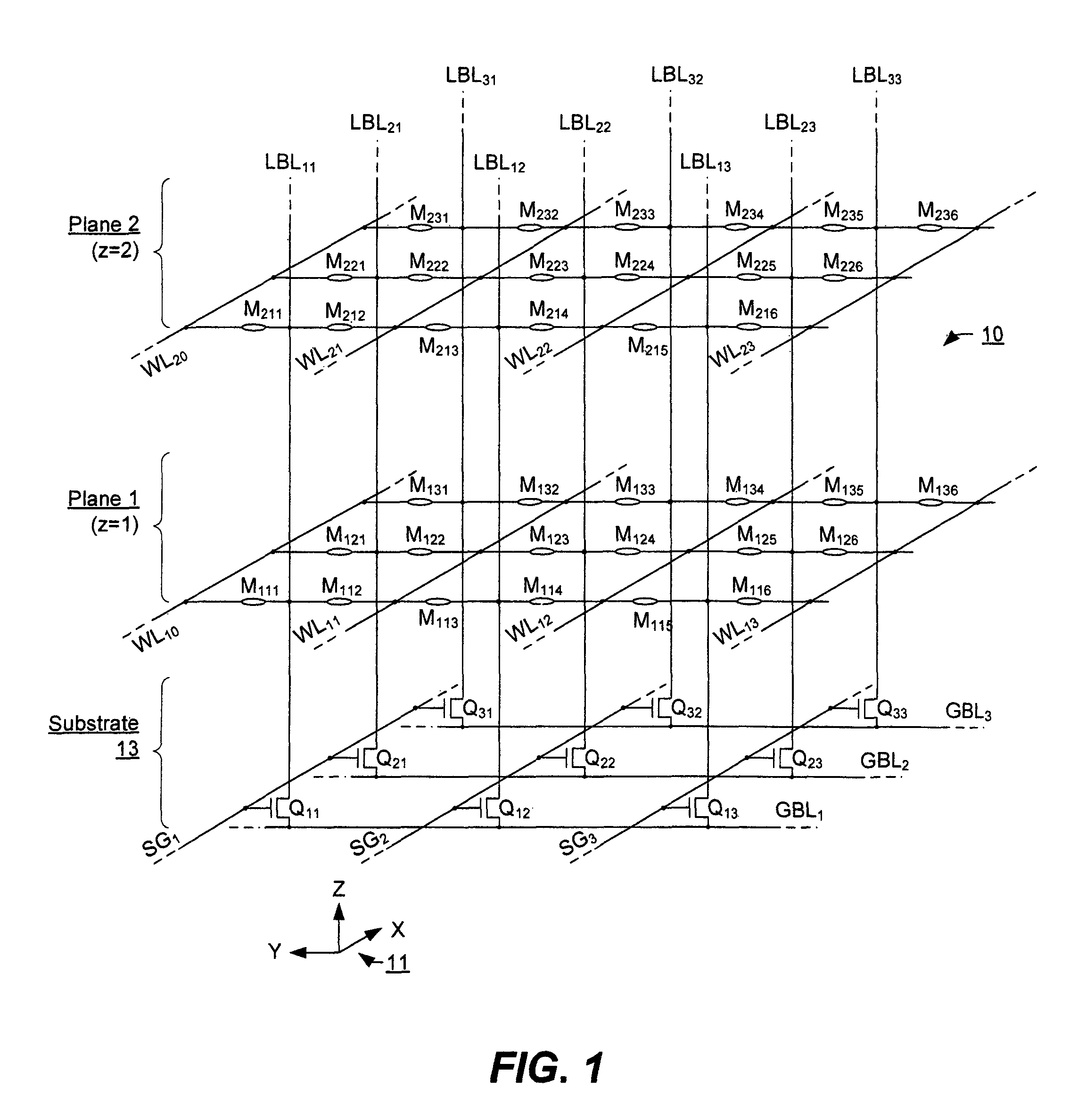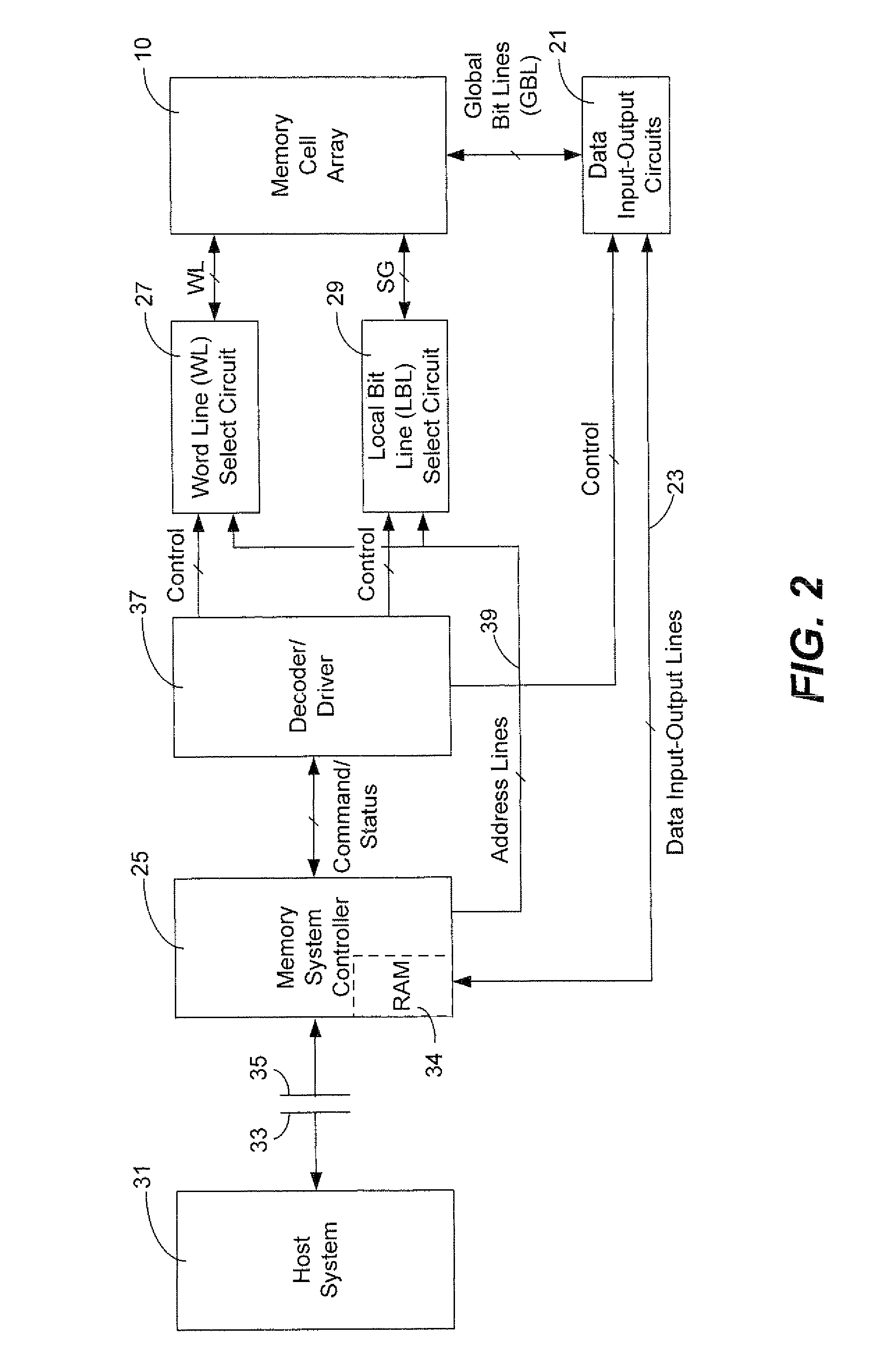Three-dimensional array of re-programmable non-volatile memory elements having vertical bit lines and a double-global-bit-line architecture
a non-volatile memory element, three-dimensional array technology, applied in the direction of digital storage, semiconductor devices, instruments, etc., can solve the problems of large power supply, unsatisfactory leakage current, and difficulty in accurately reading the state of addressed (selected) memory elements, so as to achieve accurate reading of state, exceeding reasonable power supply capabilities, and reducing leakage current levels through unadressed elements
- Summary
- Abstract
- Description
- Claims
- Application Information
AI Technical Summary
Benefits of technology
Problems solved by technology
Method used
Image
Examples
Embodiment Construction
[0038]Referring initially to FIG. 1, an architecture of a three-dimensional memory 10 is schematically and generally illustrated in the form of an equivalent circuit of a portion of such a memory. This is a specific example of the three-dimensional array summarized above. A standard three-dimensional rectangular coordinate system 11 is used for reference, the directions of each of vectors x, y and z being orthogonal with the other two.
[0039]A circuit for selectively connecting internal memory elements with external data circuits is preferably formed in a semiconductor substrate 13. In this specific example, a two-dimensional array of select or switching devices Qxy are utilized, where x gives a relative position of the device in the x-direction and y its relative position in the y-direction. The individual devices Qxy may be a select gate or select transistor, as examples. Global bit lines (GBLx) are elongated in the y-direction and have relative positions in the x-direction that ar...
PUM
 Login to View More
Login to View More Abstract
Description
Claims
Application Information
 Login to View More
Login to View More - R&D
- Intellectual Property
- Life Sciences
- Materials
- Tech Scout
- Unparalleled Data Quality
- Higher Quality Content
- 60% Fewer Hallucinations
Browse by: Latest US Patents, China's latest patents, Technical Efficacy Thesaurus, Application Domain, Technology Topic, Popular Technical Reports.
© 2025 PatSnap. All rights reserved.Legal|Privacy policy|Modern Slavery Act Transparency Statement|Sitemap|About US| Contact US: help@patsnap.com



